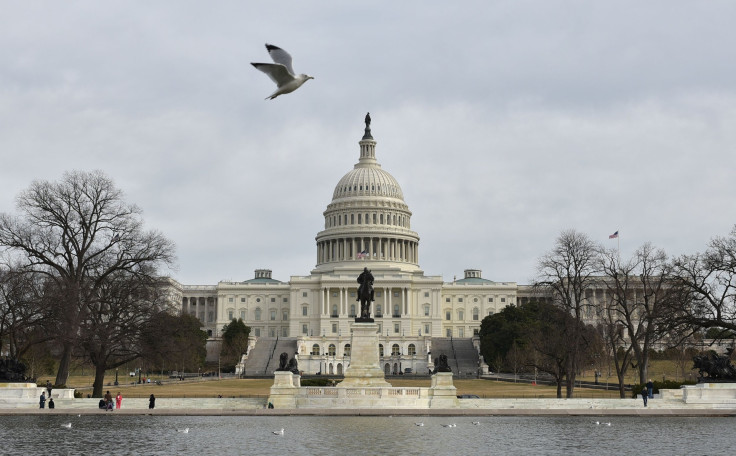Non-Stop Ads And Robocalls: Welcome To America's Costliest Election

PALMDALE, Calif. - Wendy Burke has had enough. Campaign advertisements bombard her favorite TV shows. Dozens of election pamphlets fill her mailbox. Every day, she gets several political calls on her cell phone and more on her landline. Strangers knock at her door seeking her vote.
“It’s ridiculous,” Burke, 47, said outside a shopping center in Palmdale, California. “I’ve had to block my calls.”
Welcome to the most expensive race in the hard-fought battle between Republicans and Democrats for control of the U.S. House of Representatives, which will be decided in Tuesday’s elections.
The blizzard of spending in California’s 25th district, a region stretching north and east of Los Angeles into the high desert of the Antelope Valley, stands out even during the most expensive congressional elections in U.S. history.
Most of the money is funneled into non-stop advertising - on TV, radio, social media, yard signs, automated robocalls to cell phones and land lines, bumper stickers and a deluge of pamphlets stuffed into mailboxes.
“The mailers go in the trash,” she said. “I can’t wait until this whole thing is over.”The contest, a top Democratic target, has drawn more than $26 million in spending by candidates and outside groups since January 2017, according to a Reuters analysis of Federal Election Commission (FEC) data.
It leads the 10 priciest House races, where a total of $238 million has been spent.
Democrats - aiming to pick up the 23 House seats and two in the Senate needed to control Congress and block much of Republican President Donald Trump’s agenda and increase oversight of his administration - have far outpaced their opponents in spending.
Democrats and their allies in the 10 costliest House races spent $142 million to Republicans’ $96 million, Reuters’ analysis found.
The fight for the Senate is even costlier.
In Florida, Republican Rick Scott’s contest against incumbent Democrat Bill Nelson is the most expensive Senate race. The candidates and their allies have spent nearly $160 million. Nelson’s campaign spent about $25 million while outside groups splashed out $45 million supporting him or opposing Scott, who spent nearly $67 million. Outside groups spent $22 million supporting him and opposing Nelson.
Missouri’s Senate race between Democrat Claire McCaskill and Republican Josh Hawley is second most expensive at roughly $108 million. Texas is third at about $100 million.
All up, it is a record for a congressional midterm cycle. Candidates, political parties and outside groups are set to spend more than $5.2 billion on House and Senate contests combined, according to the non-partisan Center for Responsive Politics.
The Democratic share of spending for the House swelled to 60 percent this year, from 44 percent in 2014, the previous midterm elections, said Sheila Krumholz, the center’s executive director.
One reason for the big spending: Trump.
“This is in no small part a referendum on the 2016 election, and it’s been bolstered by the role of women, the #MeToo Movement, the Brett Kavanaugh nomination, and the fact that so many women are running,” Krumholz said.
REPUBLICANS ON DEFENSE
Republicans are seeking re-election in nine of the 10 most expensive House races. The tenth is an open Republican seat. Each recorded spending of more than $20 million.
Four of the costliest races are in California. Contests in Washington, Pennsylvania, Colorado, Florida, New York and Minnesota round out the list.
California’s 25th district is one of the most competitive. Republicans have held the seat since 1992. But the past decade has seen an influx of newcomers priced out of the Los Angeles housing market, and now nearly 40 percent of the district’s 720,000 residents are Hispanic.
Democrats set their sights on taking the district after 2016 presidential candidate Hillary Clinton won it by seven points and a Republican, Representative Steve Knight, clinched another term by six points.
This year, Knight, 51, has been outraised and outspent by Democratic challenger Katie Hill, who previously ran a non-profit for the homeless and is seeking office for the first time.
Hill, 31, raised $7.3 million by mid-October, compared to the $2.4 million raised by Knight, according to FEC data. Hill has out-spent Knight $5.9 million to $2 million, with nearly three quarters of her money going to advertising.
With money from outside groups factored in, more than $18 million has been spent on Hill’s behalf, compared to about $8 million for Knight, Reuters found.
Independence USA PAC, almost entirely funded by former New York mayor Michael Bloomberg, has spent more than $4.5 million in ads supporting Hill.
The money helped the political newcomer blanket the district with her liberal message supporting a path to universal healthcare, an assault weapons ban and gay-and-lesbian rights.
That could prove a double-edged sword. District voter Burke said she had leaned toward Knight. Then the avalanche of Hill ads and mailers annoyed Burke so much it cemented her decision to cast her ballot for him.
Reuters
Reporting by Tim Reid in Palmdale, California, and Grant Smith in New York; Editing by Colleen Jenkins and Grant McCool
© Copyright Thomson Reuters 2024. All rights reserved.





















